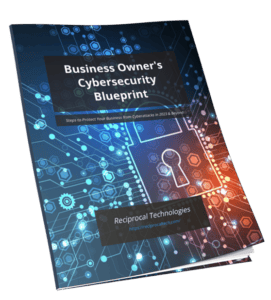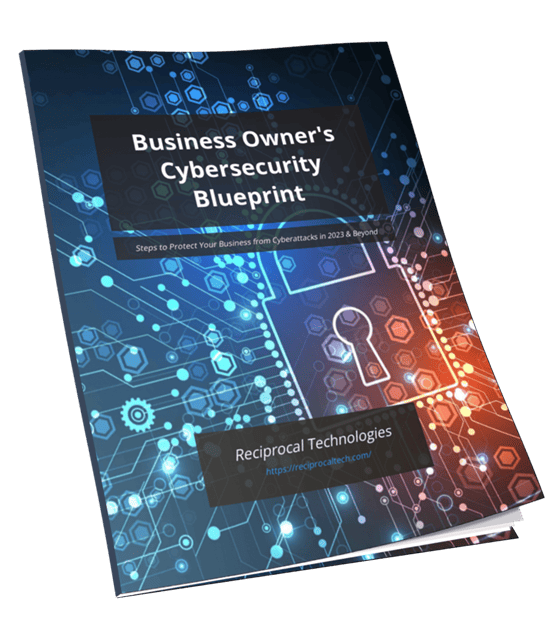Indianapolis IT & AI Automation for Businesses: Staying Ahead

The world of business is changing quickly because of AI & IT automation. Companies in many industries are using these technologies to be more productive and run their operations smoothly, particularly when supported by managed services in Indianapolis IN. Here are some key ways it’s impacting businesses:
- Increased Efficiency: Automation reduces manual tasks, allowing teams to concentrate on important strategies.
- Cost Reduction: Solutions powered by AI can result in significant savings by optimizing how resources are used.
- Enhanced Decision-Making: Analyzing data in real-time leads to better decision-making.
Businesses that embrace automation not only enhance their processes but also set themselves up for future success. Yet, challenges like high upfront costs and getting the workforce onboard need to be tackled. Finding a balance between the benefits of AI and these potential downsides will decide how well companies can execute their automation plans in today’s Indianapolis IT landscape.
Understanding AI and IT Automation
Artificial intelligence (AI) refers to systems that can perform tasks typically requiring human intelligence, such as understanding natural language, recognizing patterns, and making decisions based on data analysis. IT automation involves using software tools to automate repetitive tasks, enhancing operational efficiency.
Traditional vs. AI-Driven Strategies
Traditional automation methods rely on predefined rules and scripts to execute specific tasks. These systems can streamline processes but lack the ability to adapt or learn from new data. In contrast, AI-driven strategies leverage machine learning and advanced algorithms, allowing systems to evolve based on real-time inputs. This adaptability enhances decision-making capabilities.
Business Automation Advantages
Implementing AI and IT automation offers significant advantages for businesses:
- Increased Efficiency: Automating routine tasks reduces manual work, allowing employees to focus on strategic initiatives.
- Cost Savings: Streamlined operations lead to lower operational costs over time.
- Enhanced Decision-Making: AI analyzes vast amounts of data quickly, providing insights that facilitate informed decision-making.
Leveraging Human-Machine Collaboration for Business Success
Human-machine collaboration is reshaping workplace innovation, driving efficiency and creativity. By combining employee intuition with technological precision, businesses enhance decision-making processes. Here are key aspects of this collaboration:
- Enhanced Creativity: Machines handle repetitive tasks, allowing humans to focus on strategic thinking and creative problem-solving.
- Improved Accuracy: AI systems provide data-driven insights, enabling employees to make informed decisions and reduce errors.
- Real-time Adaptability: Human oversight ensures that AI systems can adapt to changing circumstances, maintaining operational flexibility.
Continuous Learning: Empowering Employees in Automated Environments
Ongoing learning is vital for employees to thrive in automated workplaces. The rapid pace of technological advancement necessitates adaptation and skill enhancement. Here are key reasons why continuous learning matters:
- Skill Relevance: Automation changes job requirements, making it imperative for employees to update their skills regularly.
- Career Advancement: Embracing new technologies opens doors to new roles and responsibilities, fostering career growth.
- Employee Engagement: Organizations that invest in training often see higher employee satisfaction and retention.
Numerous training programs and certifications are available to support workforce training in automation:
- LinkedIn Learning: Offers courses on AI, data analysis, and automation tools.
- Coursera: Provides access to specialized certificates from leading universities on relevant topics.
Organizations can implement effective upskilling and reskilling initiatives by:
- Assessing Training Needs: Identify skill gaps within the workforce related to automation technologies.
- Creating Customized Programs: Develop tailored training solutions aligned with organizational goals.
- Encouraging Lifelong Learning: Foster a culture where continuous education is valued and supported
Implementing Effective AI Automation Strategies
Identifying viable automation opportunities is crucial for successful AI implementation strategies. Follow these steps to streamline your approach:
- Assess Business Processes: Evaluate current workflows to pinpoint repetitive, time-consuming tasks that could benefit from automation.
- Identify Use Cases: Focus on specific use cases relevant to your industry. For example, customer support can leverage chatbots, while finance can benefit from automated reporting.
Choosing the right AI tools enhances efficiency and aligns with business goals. Consider these options:
- Salesforce Einstein: Ideal for CRM integration, it provides insights into customer behavior.
- UiPath: A leader in Robotic Process Automation, it simplifies complex workflows.
Integrating new technologies within existing systems requires careful planning. Best practices include:
- Conducting Compatibility Checks: Ensure new tools can seamlessly work with your current infrastructure.
- Engaging Stakeholders: Involve team members early in the process to address concerns and gather feedback.
By following these guidelines, organizations can effectively implement AI automation strategies that boost productivity and drive innovation.
Anticipating Future Trends in AI and Automation
Emerging trends such as hyperautomation are reshaping the landscape of business processes. This approach integrates technologies like Artificial Intelligence (AI), Machine Learning (ML), and Robotic Process Automation (RPA) to automate complex workflows. Companies adopting hyperautomation are experiencing significant gains in efficiency and productivity. For instance:
- ServiceNow has leveraged hyperautomation to streamline IT service management, resulting in reduced response times and enhanced user satisfaction.
- Cognizant employs hyperautomation in its client operations to optimize supply chain management, leading to improved logistics and cost reductions.
The role of autonomous systems is evolving within business environments. These systems can handle tasks without human intervention, optimizing complex processes. Benefits include:
- Increased operational efficiency by minimizing human error.
- Enhanced data analysis capabilities that allow for real-time decision-making.
Challenges accompany this shift; organizations must address concerns about data privacy, system integration, and workforce adaptation. As companies navigate these advancements, the balance between leveraging automation and maintaining human oversight will be crucial for sustainable growth.
Embracing Change Through Automation
Embracing change with AI & IT automation is essential for businesses striving to thrive and stay ahead, and many achieve this by leveraging Indianapolis IT consulting expertise.
Organizations must adopt AI-driven solutions strategically, recognizing the potential to enhance operational efficiency and decision-making. Being mindful of ethical implications ensures responsible use of technology, fostering trust with customers and stakeholders. Maintaining a competitive edge hinges on:
- Lifelong learning opportunities for employees
- Building collaborative relationships between humans and machines
The future of work will demand agility and adaptability. Companies that prioritize continuous skill development, embrace innovation, and leverage the synergy between human insight and machine intelligence will position themselves as leaders in their industries.
Frequently Asked Questions About IT Automation
What is the transformative impact of AI and IT automation on businesses?
AI and IT automation significantly transform businesses by enhancing operational efficiency, reducing costs, and improving decision-making capabilities. Organizations leveraging these technologies can stay competitive by automating routine tasks and enabling employees to focus on more strategic initiatives.
How do AI-driven strategies differ from traditional automation methods?
AI-driven strategies utilize machine learning and data analytics to adapt and improve over time, while traditional automation methods typically follow pre-defined rules without the ability to learn from new data. This differentiation allows AI-driven solutions to offer greater flexibility and responsiveness to changing business needs.
Why is human-machine collaboration essential for workplace innovation?
Human-machine collaboration is vital for workplace innovation as it combines human intuition and creativity with technological precision. This synergy enhances decision-making processes and drives innovative solutions, leading to improved business outcomes. Successful case studies across various industries illustrate the effectiveness of this collaboration.
What role does continuous learning play in automated workplaces?
Continuous learning is crucial for employees in automated workplaces as it equips them with the necessary skills to thrive amidst technological advancements. Ongoing training programs and certifications, such as those offered by LinkedIn Learning or Coursera, empower workers to adapt to new tools and methodologies, ensuring they remain relevant in their roles.
What are some best practices for implementing effective AI automation strategies?
To implement effective AI automation strategies, organizations should first identify viable opportunities based on specific use cases relevant to their industry. Selecting appropriate AI tools that align with business goals is essential, along with following best practices for seamless integration with existing systems. This approach helps maximize the benefits of automation.
What future trends should businesses anticipate in AI and automation?
Businesses should anticipate emerging trends like hyperautomation, which integrates technologies such as AI, machine learning (ML), and robotic process automation (RPA). These advancements present opportunities for optimizing complex processes but also come with challenges that organizations must navigate to maintain a competitive edge.
About the Author
Author’s recent posts
Download the
Business Owner’s Cybersecurity Blueprint


